300 nits and 500 Hz. Pay close attention to those two numbers, because they give the new MSI MPG 271QR X50’s game away. Yup, this 27-inch, 1440p gaming monitor packs the very latest 4th gen Samsung QD-OLED panel technology.
A new generation of OLED panel is always exciting, but how much of an upgrade is it over the best currently available OLED monitors? Does it fix OLED’s full-screen brightness limitations? What about QD-OLED’s specific problems with ambient light and font rendering? What does a 500 Hz OLED actually look like set to full reheat? Hold those thoughts while we cover off this new display’s various speeds and feeds.
Along with the lofty 500 Hz refresh and 2,560 by 1,440 native resolution, you get OLED’s characteristic uber-low response times, which come in at a claimed 0.03 ms. No question, this thing is built for speed.
It’s also engineered to be brighter than previous displays that rely on Samsung’s QD-OLED technology. Right at the beginning of the year at the CES show, Samsung unveiled the next step in its QD-OLED roadmap. It’s taken a little while for that to show up in PC monitors as opposed to TVs, but it’s finally landed at PCG towers.
MSI MPG 271QR X50 specs
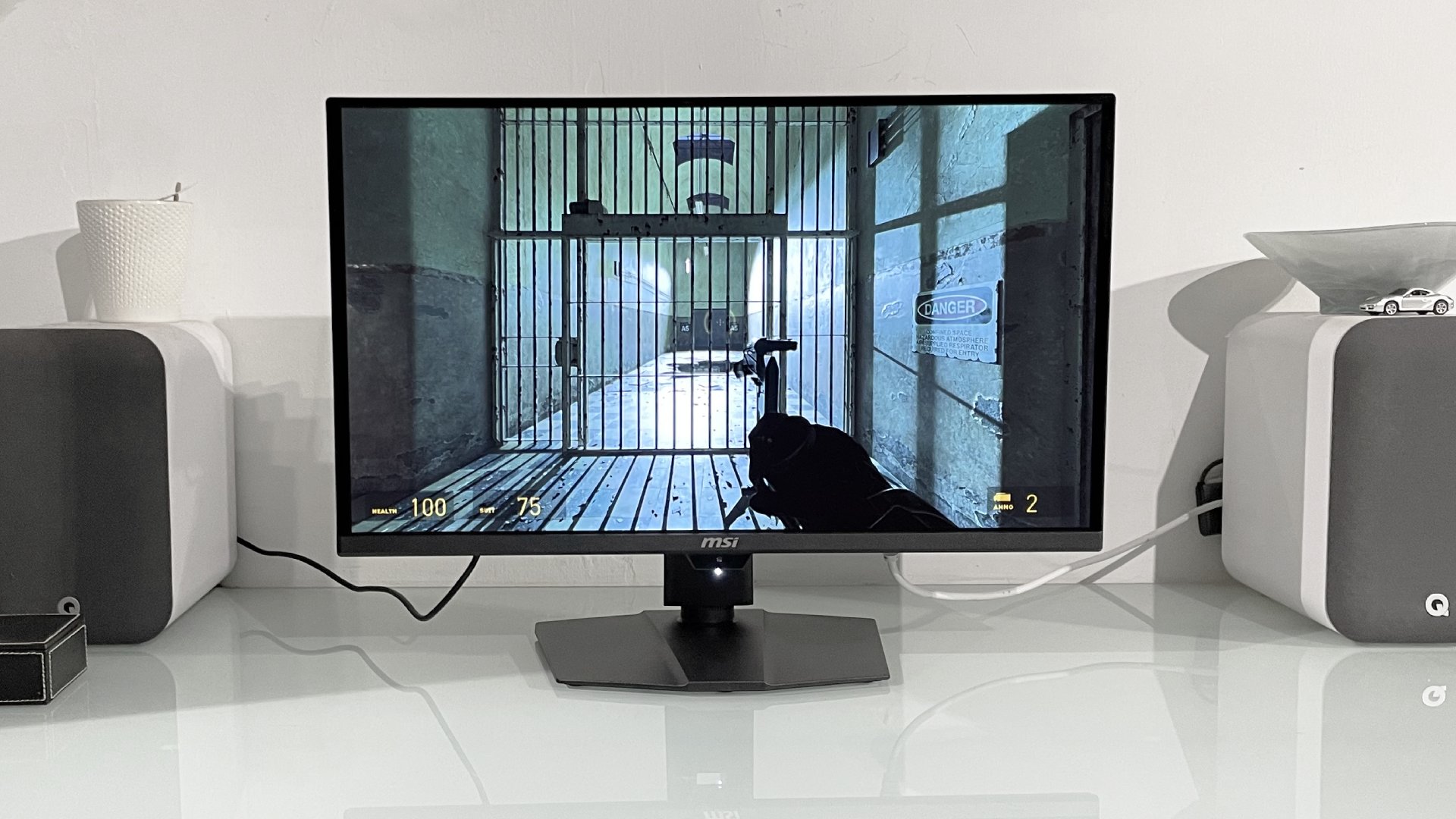
(Image credit: Future)
Screen size: 27-inchResolution: 2,560 x 1,440Brightness: 300 nits full-screen, 1,000 nits HDR 3% APLResponse time: 0.03 msRefresh rate: 500 HzHDR: DisplayHDR TrueBlack 500 Features: QD-OLED panel, adaptive sync, HDMI 2.1, DisplayPort 2.1a, USB-C with 98 W PD, 2x USB-APrice: $899 | £899
Now that it’s here, peak performance is some distance off the 400-plus nits full-screen brightness Samsung was talking about back at CES and has since been implemented for TVs. Instead, MSI is claiming a mere 300 nits for the MPG 271QR X50.
You could argue that’s both a little disappointing and a bit behind LG’s latest tandem WOLED technology, which is rated as high as 335 nits in various new 27-inch 1440p monitor models that use that new tandem OLED panel, including the LG UltraGear 27GX700A. However, it’s still a step up on previous gaming monitors using Samsung’s QD-OLED technology and it’s notable that both this monitor and that LG get the same DisplayHDR TrueBlack 500 certification.
That probably reflects the fact that, while LG’s WOLED panels beat Samsung QD-OLED when it comes to cranking out the highest peak brightness displaying pure white, QD-OLED tends to perform better for colour brightness. For the record, MSI isn’t claiming any advance when it comes to peak HDR performance, with the panel topping out at 1,000 nits in a 3% window. Monitors using the new LG tandem OLED tech go as high as 1,500 nits by that measure.
Peak panel performance aside, you get comprehensive connectivity thanks to HDMI 2.1, DisplayPort 2.1a (UHBR20) and USB-C with 98 W of power delivery, plus a two-port USB-A hub. Notably, this display can hit the full 500 Hz via all three input options, which just goes to show the attention MSI has paid to the details.
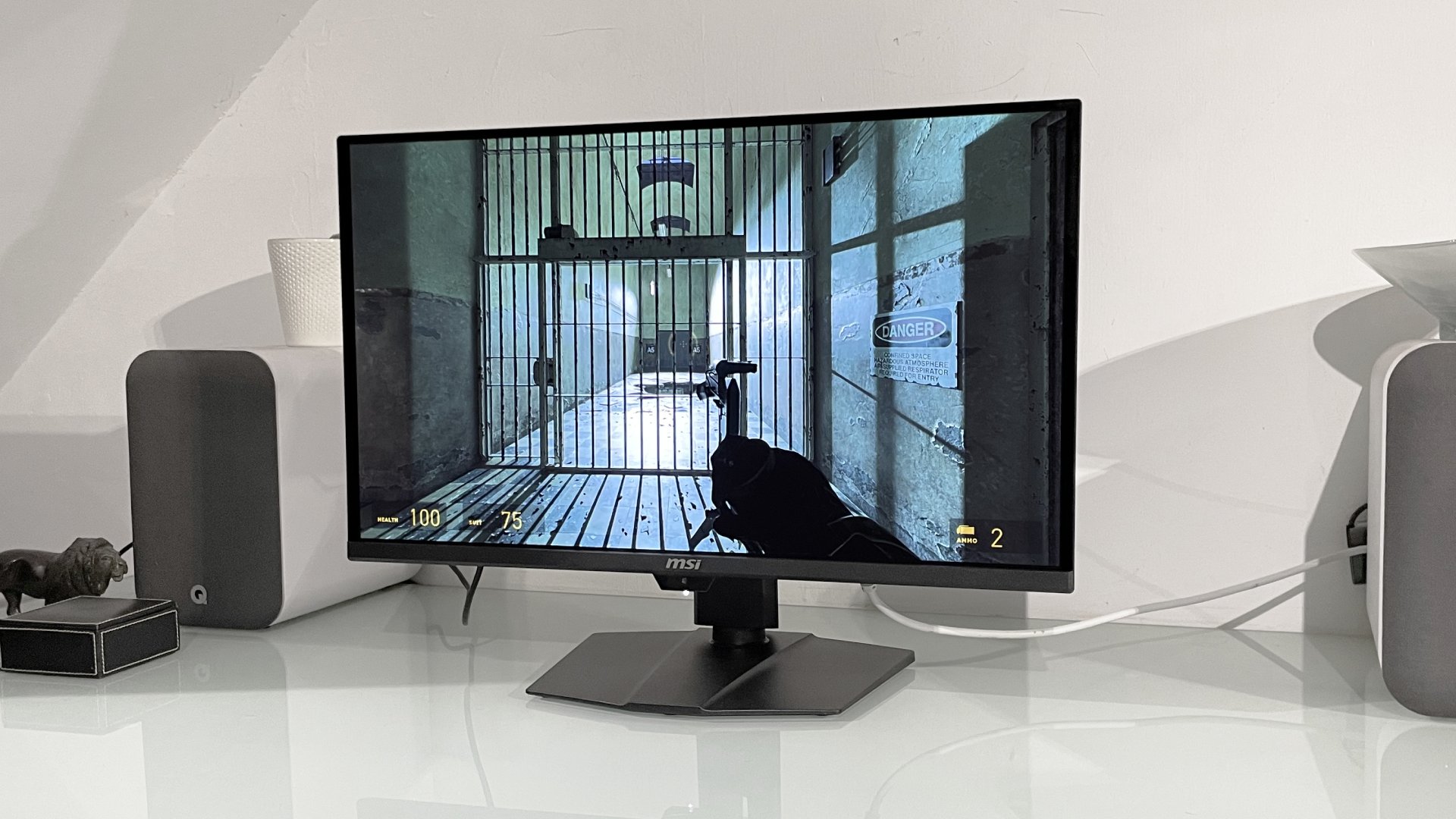
(Image credit: Future)
Another example that MSI has gone the extra mile is the “EOTF Boost” mode in the HDR options. Most OLED monitors have two primary HDR modes, one mapped to the panel’s DisplayHDR certification (in this case, the aforementioned DisplayHDR TrueBlack 500) and one to the panel’s peak brightness, which is 1,000 nits for this monitor.
The problem is that the former tends to deliver better results when brighter outdoor scenes are being rendered, the latter when displaying small, bright highlights on a mostly dark background. The EOTF Boost mode is supposed to give you the best of both worlds.
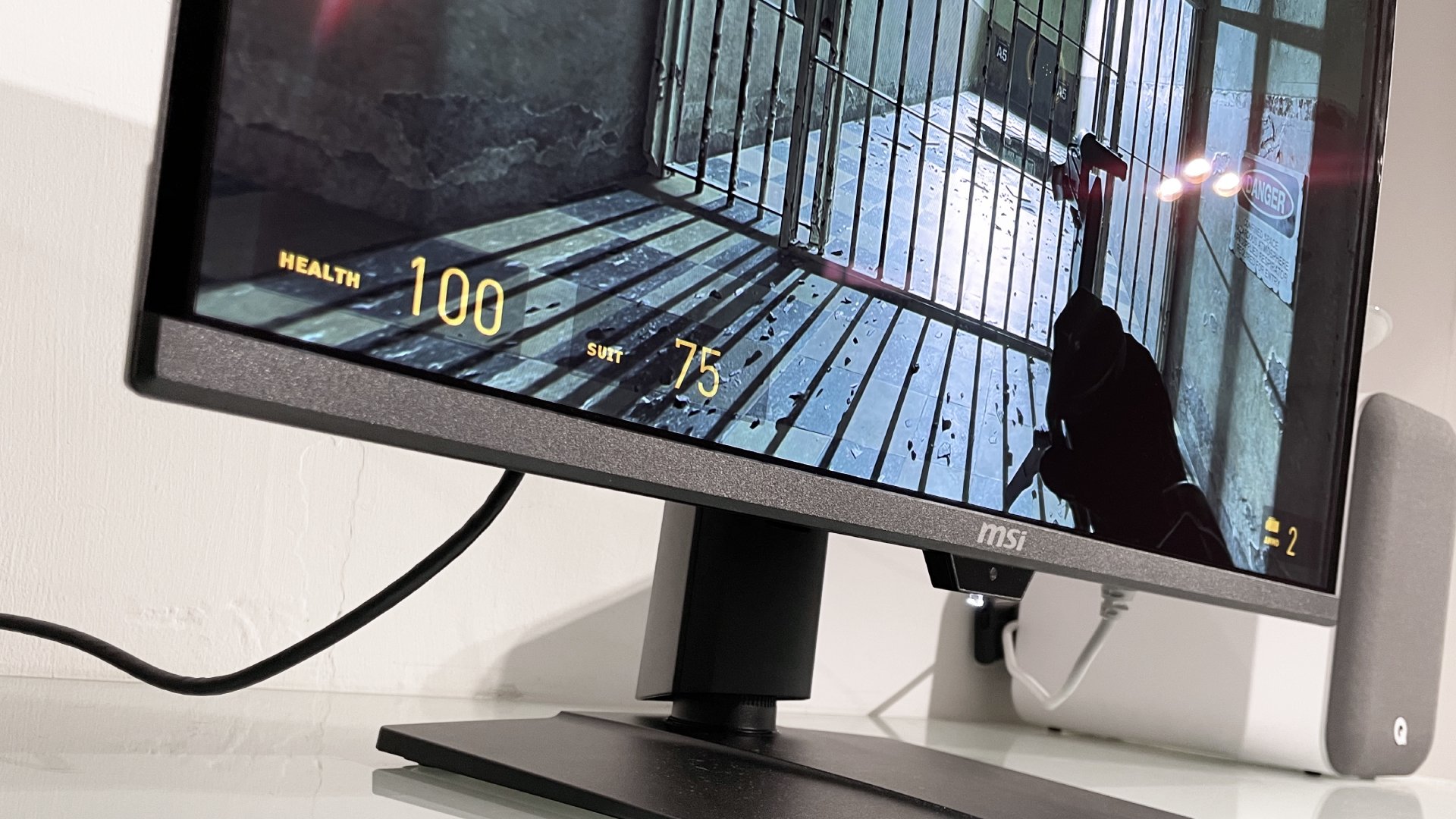
(Image credit: Future)
Rounding out the features and frills, MSI’s usual design language for OLED monitors makes another appearance. It’s neat enough, even if some of the plastics feel a bit cheap and scratchy and the RGB-lit MSI logo on the rear is pretty half-hearted.
As with other QD-OLED panels, there’s a fair amount of pixel over provisioning, which allows the panel-protection software to shunt the image around to prevent burn-in. That’s welcome in terms of longevity, but, visually speaking, it makes for slightly larger effective panel bezels.
It’s definitely a touch punchier than before, but not dramatically so.
On that subject, the MSI MPG 271QR X50 also has a sensor powered by a chip with an NPU and AI algorithms which supposedly detects when you step away from your PC, dimming or disabling the display. In practice, it’s pretty clunky and probably not much of an advance over a timer that puts the display to sleep. Another win for AI. Not. More importantly, however, there is a reassuring three-year burn-in warranty.
Whatever, just how good is that new Samsung QD-OLED tech? It’s definitely a touch punchier than before, but not dramatically so. Of course, in terms of full screen brightness, we’re only talking about a step up from 250 nits up to 300 nits. And brightness isn’t even perceived in a linear fashion. In other words, doubling the measured brightness doesn’t double the perceived brightness.
Image 1 of 5
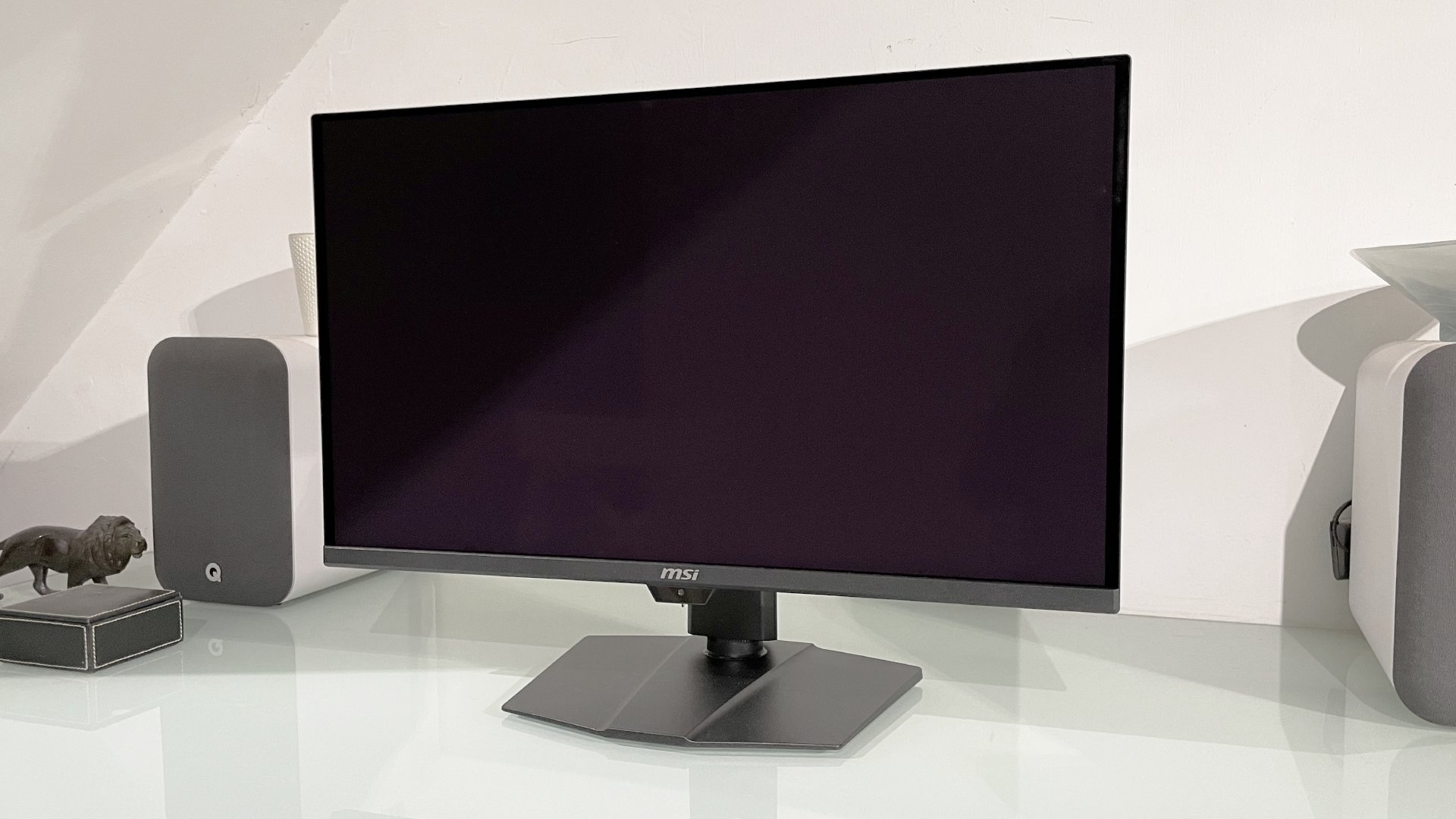
(Image credit: Future)
Image 2 of 5

(Image credit: Future)
Image 3 of 5

(Image credit: Future)
Image 4 of 5
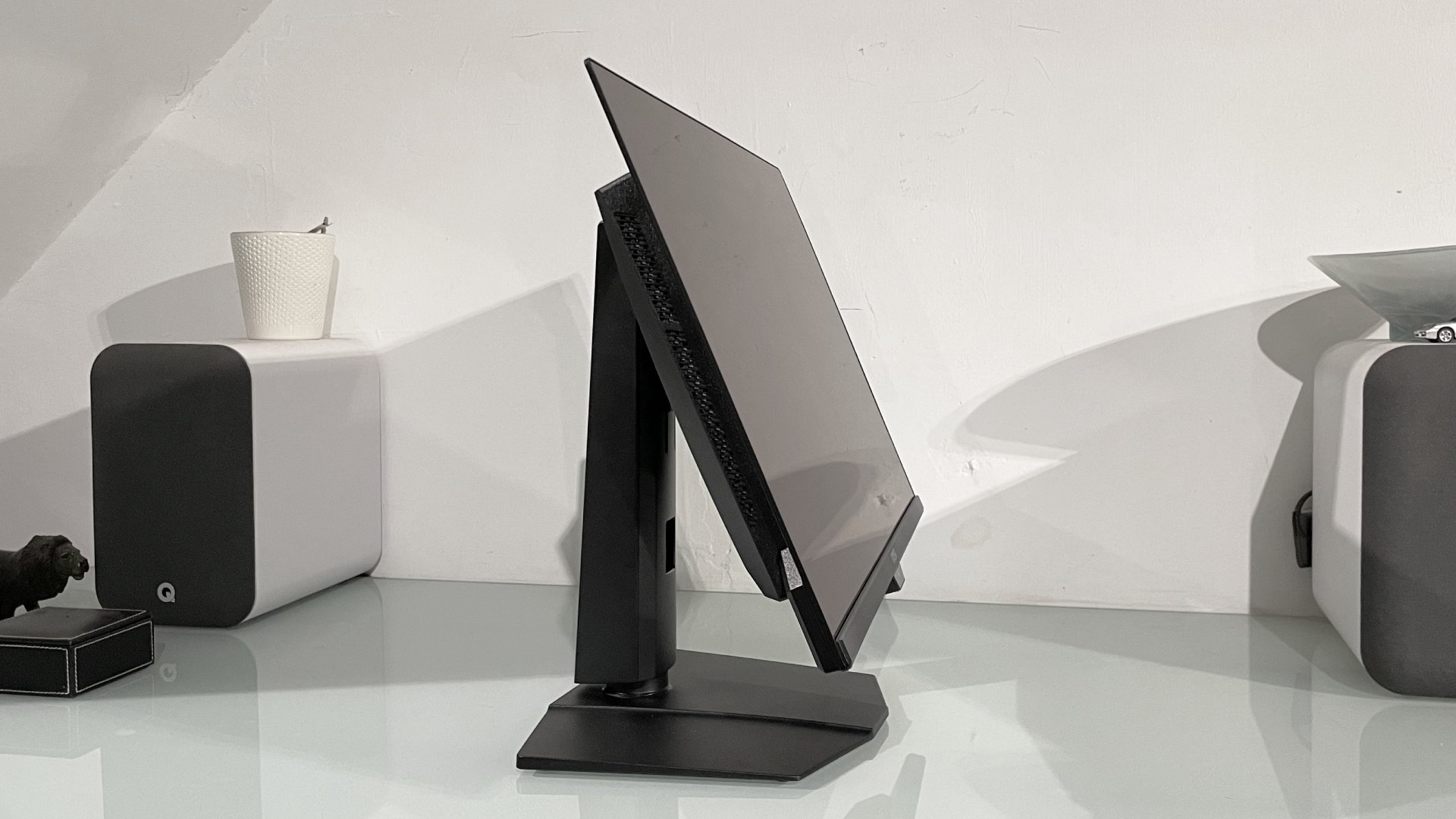
(Image credit: Future)
Image 5 of 5

(Image credit: Future)
That said, at its best this display is genuinely stunning when it comes to HDR performance. Sony has a nifty little demo video showing a real-life fireworks display. It really shows off the incredible per-pixel capabilities of the monitor like this. It’s like you’re watching the fireworks display live. The details absolutely pop.
Indeed, watching that video on this display in SDR mode and then HDR mode is pretty much the perfect demonstration of the benefits of the latter, which aren’t always easy to understand, especially when most monitors advertised with HDR support can’t actually render a true HDR image. But this monitor makes the SDR version of those Sony fireworks look deathly dull, by comparison.
Image 1 of 2

An LG WOLED on the left, this new MSI QD-OLED on the right with its slightly warmer colour temperature. (Image credit: Future)
Image 2 of 2
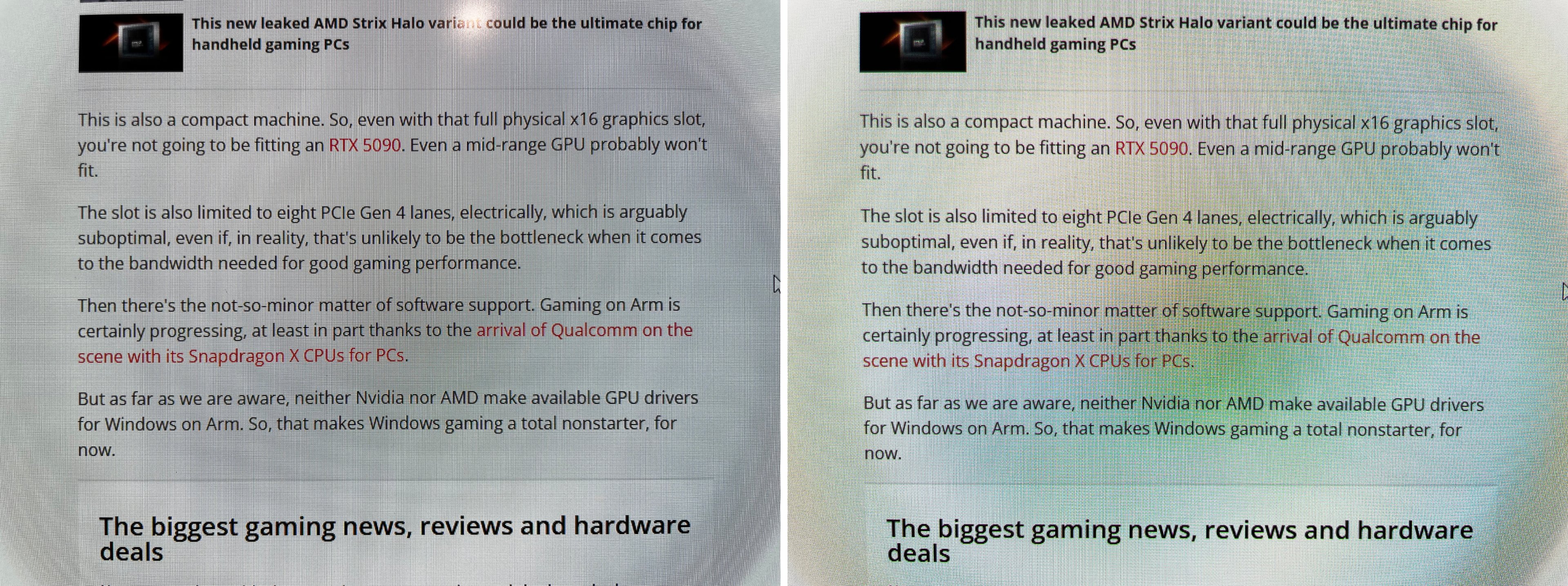
LG WOLED on the left, this new QD-OLED on the right. (Image credit: Future)
Anywho, what about, you know, how this thing looks actually in games? The short answer is that it positively sizzles in the right circumstances. Neon lights on a dark background, gently panning star fields, explosions in the night sky—all these things look incredible, no doubt even more so thanks to the glossy panel coating, which only accentuates the sense of ultra-precise contrast.
A bright outdoor desert game scene, on the other hand, that’s a bit more problematic and still something a regular old LCD monitor does better, at least by some measures. Even this latest QD-OLED panel tech just can’t sustain sufficient brightness across the panel to really pop when you’re lighting the whole thing up.
The glossy panel coating only accentuates the sense of ultra-precise contrast.
As for that EOTF Boost mode, it does a pretty good job of closing the gap to the HDR 500 mode for full-screen brightness while maintaining that searing peak HDR punch for small details. It’s not perfect, but it’s probably good enough to mean you won’t be tempted to switch between modes. And that’s very welcome, because switching between HDR modes re-syncs the monitor and tends to kick you back out to the desktop. A single mode for all HDR content is preferable by a mile.
Of course, speed is the other big attraction here and fewer, if any, caveats need to be rolled out to justify this incredibly fast MSI monitor in that context. Sure, you can debate the merits of really high refresh rates of 500 Hz and beyond. But in objective terms, the MPG 271QR X50 is capable of remarkable clarity in the tried and literally tested UFO Test, probably the best I’ve yet seen.

(Image credit: Future)
Of course, the benefits of, say, 360 Hz versus the 500 Hz in-game are a little more subtle. But however you slice it, the clarity and sense of instantaneous response in hair-trigger online shooters is something pretty special. This is a fantastic, even stupendous gaming display; lightning fast and ultra clear.
However you slice it, the clarity and sense of instantaneous response in hair-trigger online shooters is something pretty special.
I’d also argue that even if you prioritise low latency above almost all else, this monitor means you don’t even have to entertain a 24-inch TN panel with crap colours, terrible viewing angles, and rubbish contrast. Well, I wouldn’t, even if there are now even faster TN panels running at beyond 600 Hz.
Elsewhere, the answer to the queries posed up front regarding the usual QD-OLED limitations is that they remain. This particular panel tech has always had a problem with ambient light and the MPG 271QR X50 is no exception. If you’re using it in a bright room, the black levels are undoubtedly compromised, something from which monitors with LG’s WOLED tech do not suffer.
Image 1 of 1
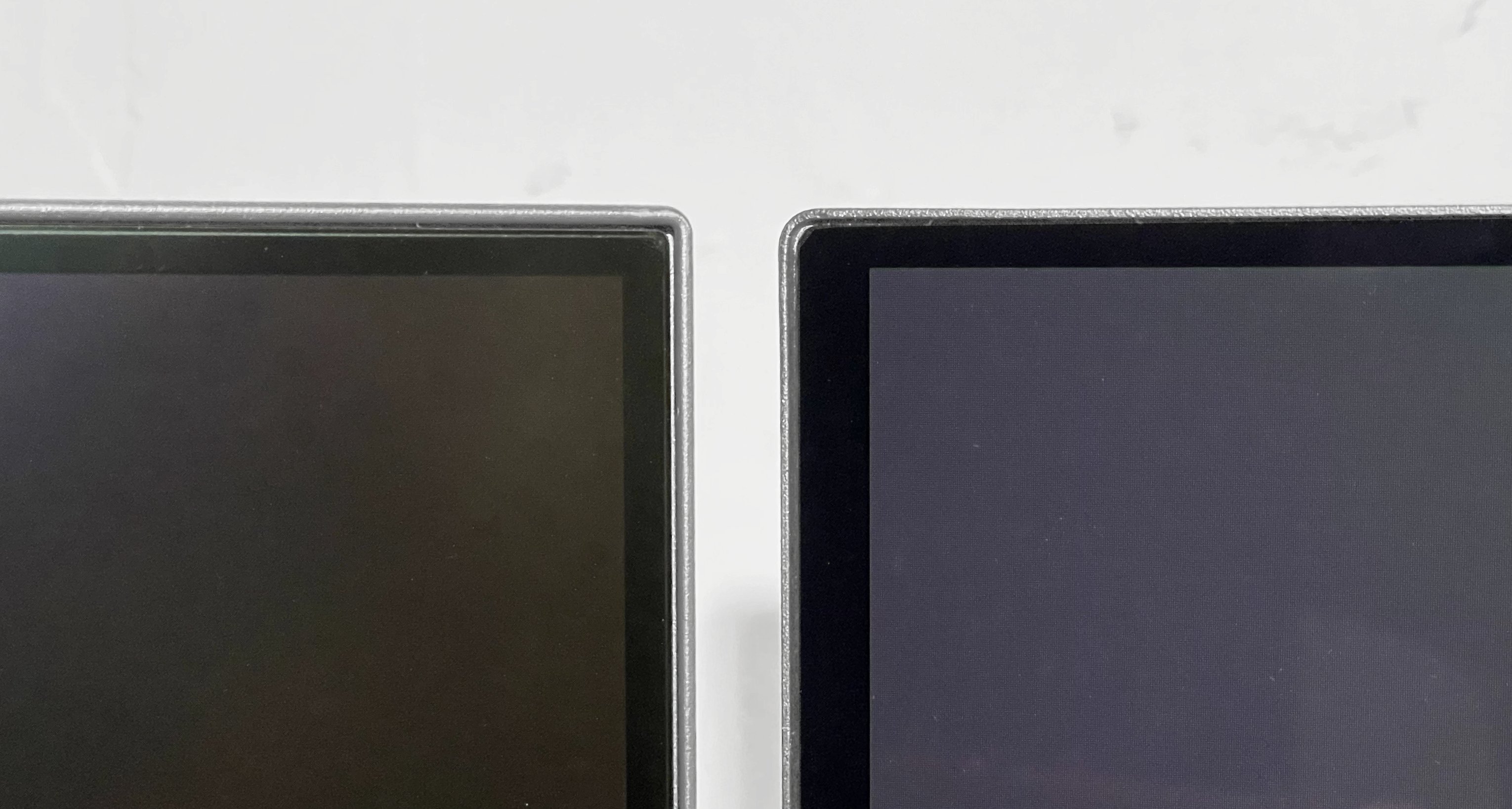
LG WOLED on the left, this new QD-OLED on the right, both switched off but in very bright ambient light. (Image credit: Future)
Then there’s the pinkish, overly warm colour balance. Again, it’s a QD-OLED signature and looks really obvious positioned next to an LG WOLED monitor, as does the ambient light issue if you shine a bright light at the pair of them. The image above compares this QD-OLED panel on the right with an LG WOLED panel to its left. Both monitors are off, but the QD-OLED looks quite bright and purpley-grey. The extent to which either of the problems will bother you is somewhat subjective.
The ambient light problem will be of zero consequence if you game in low-to-medium light levels, in other words not with your monitor right next to an unblinded window. The colour balance thing is likewise something that your eyes mostly adjust to. Moreover, LG WOLED has its own shortcomings when it comes to colour balance. Oh, and if you’re wondering or care about font and text rendering, this latest QD-OLED panel tech is slightly improved, but still very slightly soft looking and not quite as sharp as WOLED.
Buy if…
✅ You want a seriously speedy OLED panel: 500 Hz plus 0.03 ms makes for a spectacularly speedy gaming experience.
Don’t buy if…
❌ You’re expecting a huge OLED panel upgrade: Samsung latest 4th gen QD-OLED tech is improved, but only incrementally.
So what to make of the MSI MPG 271QR X50 and Samsung’s latest QD-OLED tech? For full-screen brightness, it’s an incremental rather than dramatic step and still doesn’t make that metric a total non-issue. I think we’ll need to see panels hitting at least 400 to 500 nits, full-screen, before that’s the case.
The 500 Hz refresh is more of an unambiguous win, however, provided you’re sensitive to the benefits of really high refresh rates. This thing is ridiculously quick and fabulously responsive. Then there’s the ambient light problem, the warm colour balance, oh and the price.
You’re looking at around $900 or £900. Now that you can get 1440p OLEDs under $500 / £500 on our best gaming monitor deals page, that’s very, very punchy. Personally, I wouldn’t pay the extra for the incremental brightness upgrade, it’s not worth nearly double the money. But if you’re an esports type and addicted to all those Hz, well, maybe, just maybe, it’s worth it.
From PCGamer latest via this RSS feed


